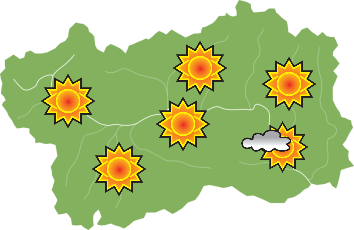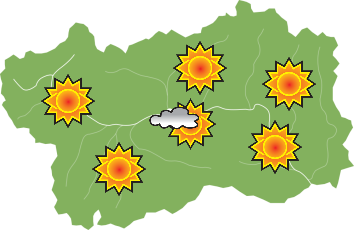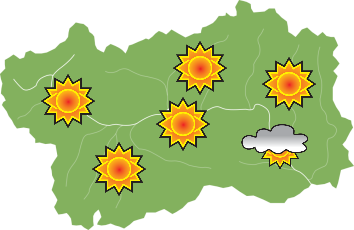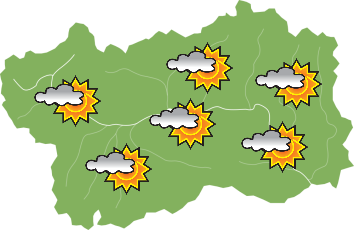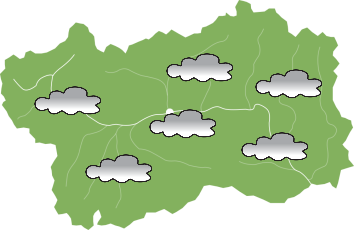Ring between La Salle and Morgex
Località: La Salle
Through the vineyards of La Salle and Morgex, in the Mont Blanc valley (which the Romans called vallis digna, today Valdigne) among ancient villages and landscapes to remember.
Informazioni tecniche
Descrizione del percorso
The circular itinerary covers in part the route of stage no. 14 of the Cammino Balteo (marked with a 3 inside an inverted triangle) and has short stretches on paved roads.
Starting from the cemetery of La Salle, you enter the main town via Cesare Ollietti which leads to Piazza San Cassiano. After skirting the parish church, you will quickly reach piazza Cavalieri di Vittorio Veneto: the view of Mont Blanc is always fascinating.
Go back a few meters and proceed on along via Chanoux and, following the signpost for the Cammino Balteo, you leave the main town. After crossing the road that leads to the hills, the walk continues on along a level surface, on an asphalted road.
At Croix des Pres, in correspondence to the chapel of Notre Dame de La Guerison, you follow the narrow road on the left which after a few meters leads to the entrance to the “Tsanta Merla” path, following the trail sign for the Cammino Balteo (stage 14 - “La Salle -Avise :/en/database/7/cammino-balteo/-aosta-valley-/la-salle-avise/3011).
The walk continues pleasantly on a flat surface with a nice surprise for the little ones: numerous wooden mushrooms made by a local craftsman.
In correspondence to a bench on the right, looking up you can see the tower of the Châtelard castle. A little further on, at the intersection with a farm road and the crossing of the Ru du Moulin irrigation canal, the woods gives way to meadows frequented by roe deer. In periods of low tourist flow, early in the morning or in the evening at dusk, you are likely to spot them.
Once you arrive at a crossroads, you leave the Cammino Balteo and continue straight on. Here, among the colorful mushrooms, elves, owls, and hearts make their appearance.
At the first intersection, take the path to the right indicated by the yellow signpost number 5A towards Château de Chatelard. You pass through terraces that now are home to vegetable gardens and vineyards. The vineyards of Morgex and La Salle are among the highest in Europe. The vine cultivated is Prié Blanc which is called an “ungrafted vine” because, thanks to the altitude at which they can thrive, at the end of the 19th century this type of vine was not grafted onto American vines due to the plague of phylloxera. This vine is used in the production of the DOC wine Blanc de Morgex et de La Salle.
You climb for the most part outside of the woods; at the intersection with the farm road you go straight on to the next bend where you take the path on the right. The last few steps uphill and the castle comes into view. After crossing the residential area of Château, you take the asphalted road that goes down to the right. A few meters after the intersection, incorporated into the walls of the castle there is the old granary made of wood, dating back to before the 19th century. The granary was used by the whole community to store the cereals which were partly used to make flour and partly preserved for sowing the following year.
Proceed on along the asphalted road and turn right at the intersection. You then enter Châtelard, the first inhabited area on the left, and as you cross it, you can admire the village oven and the carefully restored houses. Once the stone paving has ended, turn right into the alley and follow it until you reach the asphalted road again: another beautiful view of the inhabited center of La Salle, with the Grivola in the background.
At the first bend, take the narrow path on the left that enters the woods. At the end of the path, you cross the La Salle playground until you reach the back of the Maison Gerbollier, the seat of the municipality.
Then go down towards the center of the main town and, before taking via Ollietti again and returning to the starting point, you can make another stop at Maison Plassier, home to a house-museum.
Watch the videos:






